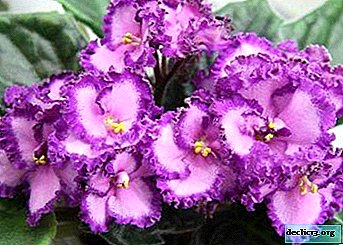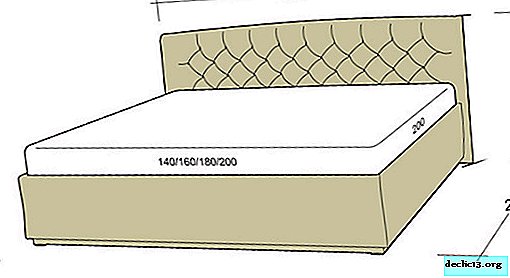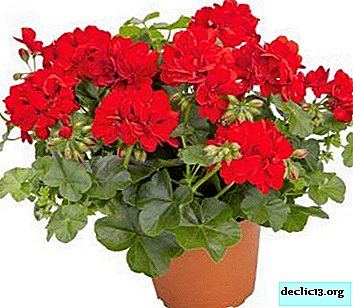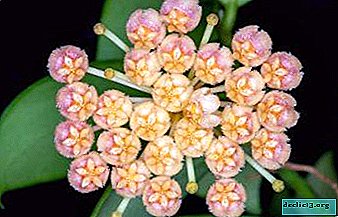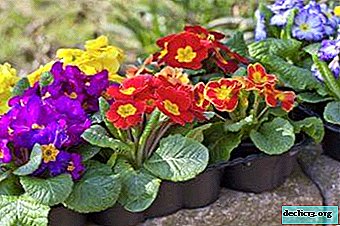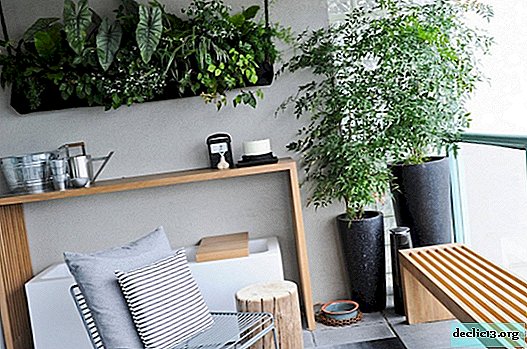Features of proper care for indoor plants: how to save flooded cyclamen from waterlogging?
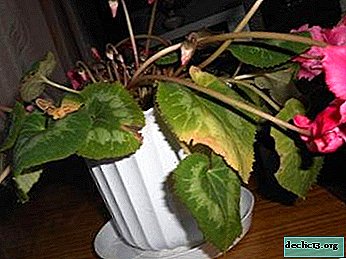
Watering is one of the most critical cyclamen care procedures. A flower loves water, but it is extremely difficult to accept waterlogging.
Excessive watering often leads to unpleasant consequences, in which the plant is very difficult to save. In this case, urgent measures are required to restore cyclamen.
Next, consider: what happens during heavy and frequent watering; how to save a flower. And also, how to properly care for a resuscitated plant.
What is this plant?
Cyclamen is a perennial herbaceous plant of the Mirsinovy or Primrose family. The birthplace of the flower are the Mediterranean and Asia Minor.
The approximate height of the plant is thirty centimeters. The tubers are flat-round in shape, have a common growth point. The diameter of the tuber is fifteen centimeters. Leaves are heart-shaped. Grow with roots on long brown petioles. The color of the leaves varies from light green to dark green with the presence of a silver ornament.
The flower is bisexual, pointed in shape. It has a color from light pink to purple. Includes five petals. The lower petal is slightly bent back. The cyclamen fruit is a box with small seeds.
How to care?
What water is needed?
 The temperature of the water must match the ambient temperature. It is necessary to use softened water - settled, rain or thawed.
The temperature of the water must match the ambient temperature. It is necessary to use softened water - settled, rain or thawed.
So that the liquid settles:
- It is required to place water in a vessel with a wide neck and stand for at least 6 hours. Do not cover the container with a lid.
- Over time, gently drain the upper layers and use for watering. Try not to touch the bottom layer with sediment.
You can take snow or ice out of town, away from roads, and thaw. Or make melt water. To do this, pour liquid into a container and place in a freezer. Water should turn into ice by two-thirds. In the middle, it should be in a liquid state. There are harmful substances, this part for irrigation can not be taken.
How often should be irrigated?
The frequency of watering a plant depends on the following factors:
- cyclamen age;
- developmental period;
- temperature and humidity;
- lighting;
- pot size.
Cyclamen prefers frequent hydration with a moderate amount of water. It is recommended to add two drops of Fitosporin to the water for irrigation in order to prevent tuber rot.
 During dormancy, watering should be reduced. It is impossible to allow complete desiccation of the soil, this can lead to the death of cyclamen.
During dormancy, watering should be reduced. It is impossible to allow complete desiccation of the soil, this can lead to the death of cyclamen.
During flowering, watering should be much more abundant than during dormancy. Watering should be done carefully, being careful not to get on the leaves and petals. You can not sharply increase the abundance of watering immediately after the appearance of buds, this can provoke rotting of the roots. When flowering lasts throughout the year, cyclamen should be watered with the same amount of water at regular intervals.
The plant is much harder to tolerate excessive moisture than a lack of moisture. Restoring a dry tuber is easier than fighting rot.
Ways
Watering from above:
- Take a watering can with a long nose or a syringe with a removable tip.
- Water strictly along the edge of the pot so that water does not get on the tuber.
- After an hour, drain the water that drained through the hole on the bottom of the pot.
Via the pallet:
- Pour water at room temperature into the pan.
- Drain the fluid after an hour.
By immersion in a container:
- Fill a container with water.
- Settle water in the container for at least twelve hours.
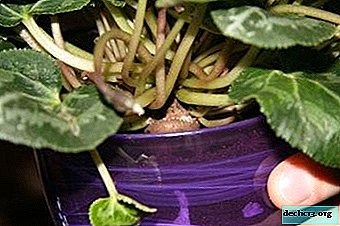 Submerge the cyclamen pot almost completely in a container of water.
Submerge the cyclamen pot almost completely in a container of water.- Leave on for 30-40 minutes.
- When the soil begins to shine from moisture, get a flower pot.
- Wait for excess water to drain through drainage holes.
To increase humidity, the pot can be placed on a flat tray with wet peat or moist pebbles. You need to stretch a thin lace from the bottom of the dishes with cyclamen to the top. Periodically pour water into the pan, and the plant will independently regulate the required amount of moisture.
Signs of waterlogging
Symptoms of overflow and lack of moisture are very similar: leaves and flowers begin to fade (you can learn about how to return a plant to life and what to do if it fades, but from this article you will learn about why cyclamen leaves twist and what to do about it). Inexperienced gardeners often try to water a wilting plant, exacerbating the situation. If the plant has not yet begun to turn yellow from overmoistening, it can be saved. If cyclamen has already begun to turn yellow and the trunk has become soft, the root decay process has started.
What happens?
If the watering is too plentiful and frequent, the roots, peduncles and cyclamen leaves begin to rot due to waterlogged soil.
How to act?
So, how do you save the flooded cyclamen and what to do if you are too waterlogged plant? The success of cyclamen rescue measures is determined by the degree of tuber decay.
- If the rotten parts are few, there is a chance of recovery. Urgent transplant needed:
- Prepare a pot with a hole in the bottom, as well as drainage and soil. Soil can be purchased in a specialized store or prepared independently. A breathable coarse peat substrate is required. For the soil mixture should be combined in equal proportions sheet land, humus, peat and sand.On a note. If there is no new soil, you can use the old one. First make sure that it does not smell rot or mold, and dry it.
- Sanitize the soil and pot if it is not new. Anneal the substrate in an oven preheated to 80 degrees for 30 minutes.
- Remove the flooded plant from the pot.
- Carefully free the roots from soil debris.
- Inspect them.
- If the roots are firm and elastic, the overflow of the plant has not yet led to irreversible consequences.
- Place the plant on pre-spread newspapers.
- Get wet root system, allow to dry.
- Pour a layer of drainage at the bottom of the pot 5 centimeters. Expanded clay, clay shards, tiny polystyrene foam, coal, vermiculite can be used.
- Place fresh, slightly moistened soil on the drainage so that after transplanting the third part of the tuber is above the surface.
- For stimulation, a little dust the root system with root.
- Plant the plant in the center of the pot and add a little bit of substrate. In summer, put expanded clay on the soil surface to prevent overheating.
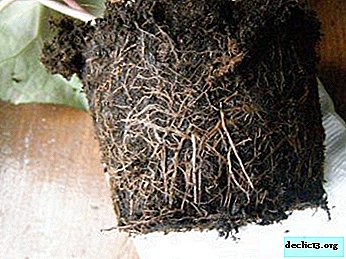 If some roots become soft, brown, the process of root decay has already begun. To save cyclamen, you need:
If some roots become soft, brown, the process of root decay has already begun. To save cyclamen, you need:- Flush the root system.
- Trim rotten roots with scissors or a sharp knife to healthy, dense tissue.
- Dry the root system.
- Sprinkle the slice with chopped activated carbon.
- Plant the plant in fresh or dried soil.
- Next, proceed as described above.
- If all the roots are soft, brown, it will not be possible to save the plant. You can cut the cuttings, treat them with root and try to root in a greenhouse, for example, under a plastic bottle.
- If the tuber rotted:
- The rotten part should be cut to a healthy place.
- Dry slightly, treat with activated carbon powder.
- Plant in fresh soil for cyclamens. The tuber should be half above ground level, the roots should not curl up.
Details on how to reanimate cyclamen at home can be found here.
Care after
- It is necessary to put the pot with cyclamen in a slightly shaded place without direct sunlight. The temperature in the room should not exceed +20 degrees and should not fall below +10.
- Two days after the procedure, when the topsoil dries up a couple of centimeters in depth, moderate watering.
- Spray with Epin-Extra once a week until complete recovery.
- Fertilize every 14 days with phosphorus-potassium top dressing. The concentration of the fertilizer used should be half as much as indicated in the instructions for use. It is better to postpone the next feeding of cyclamen, if it fell on a cloudy day.
- Do not spray the plant unless absolutely necessary.
Cyclamen does not tolerate excessive moisture. Excessive watering causes rotting of the tuber and can lead to irreversible consequences. If the flower is flooded, an emergency transplant is necessary to prevent the death of the plant. With a large degree of rotting of the roots, it is impossible to save the flower. It is important to know how to properly water cyclamen, so that the plant remains healthy and successfully develops.

 Submerge the cyclamen pot almost completely in a container of water.
Submerge the cyclamen pot almost completely in a container of water. If some roots become soft, brown, the process of root decay has already begun. To save cyclamen, you need:
If some roots become soft, brown, the process of root decay has already begun. To save cyclamen, you need:


